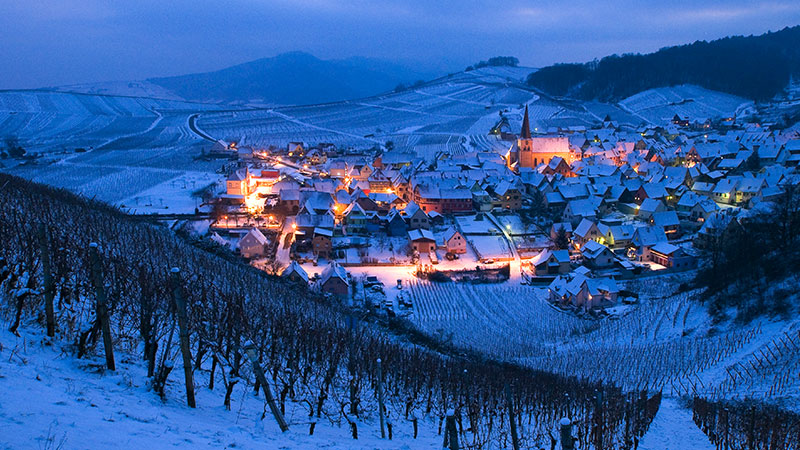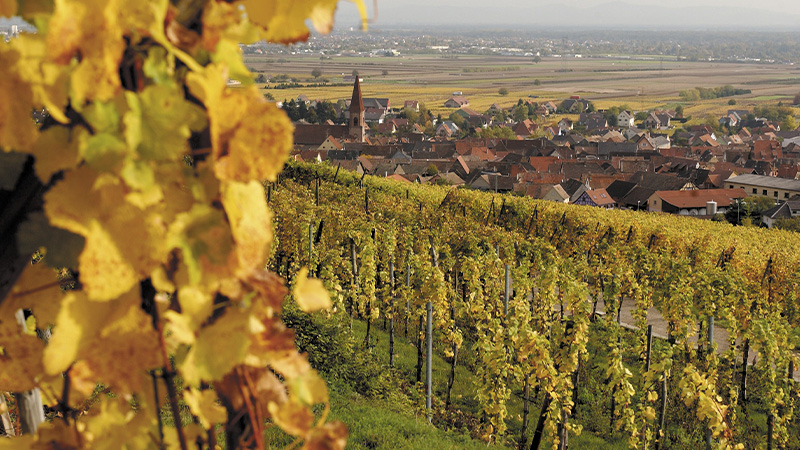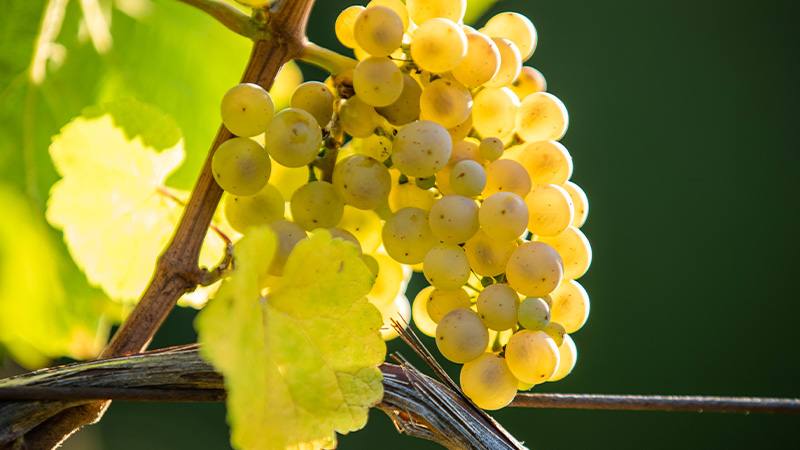
Welcome to the thick of holiday season! Whether you’re scanning flights home, strategizing stocking stuffers, or simply looking forward to extra time to relax and unwind, why not cap off the most festive time of year with a bang and the bubbles of Crémant d’Alsace.
While Champagne is France’s most well-known sparkling wine, true oenophiles looking for something delicious and with excellent value reach for Crémant d’Alsace – a sparkler made in the legendary Alsace wine region. Crémant (from the French word “cremeux” meaning creamy) is the French term for sparkling wines produced in the méthode traditionelle outside Champagne. Both Champagne and Crémant d’Alsace are recognized for their terroir, sophisticated flavor profiles, production methods, and delicate effervescence. One could say Crémant d’Alsace is the choice for the budget-savvy shopper with Champagne tastes (literally).
First perfected in the late 19th to early 20th century, Crémant d’Alsace was recognized as an official appellation (or AOC) in 1976 and is today one of the most popular wines in France. Most importantly, it is very food-friendly and also makes for a stylish and in-the-know gift for almost every wine lover on your list.
The Sparkling Star of Alsace
Admired for its picturesque rolling hills, storybook Medieval towns, and legendary wines, Alsace is the gem of Northeastern France. Bordering Germany and Switzerland, it is nestled between the Rhine River and the Vosges Mountains that act as a buttress against westerly winds and rain. Alsace benefits from crisp mountain air and abundant sunshine, which allows grapes to ripen evenly on the vine to become well-rounded and aromatic wines. Alsace also boasts thirteen unique types of soil, from volcanic to clay, and its varied terroir makes it ideal for growing a range of grapes.
Today, some Crémant d’Alsace wines are made from a single grape variety, while others are crafted from a palette of varieties, such as Pinot Gris, Riesling, Auxerrois, and Chardonnay — often with Pinot Blanc as the base. Each grape variety has been selected to contribute to the delicate balance of the cuvée and aged according to regional standards. There is also Crémant d’Alsace rosé — which is made of 100% Pinot Noir — and pairs well with many cuisines, from salads and poultry dishes to decadent chocolate desserts.
Carrie Lyn Strong, Consulting Sommelier & Wine Educator, explains why the nuances of the region make for great wines. “Given the Alsace region’s dedication to winemaking excellence, Crémant d’Alsace is surprisingly underrated and fiercely delicious when paired with so many different cuisines or when enjoyed by itself! Using similar grape variety blends, the same traditional fermentation process (méthode champenoise), and equivalent aging techniques as Champagne, Crémant d’Alsace over-delivers on quality while maintaining an approachable price. It’s a dependable, elegant and lively alternative to high-priced Champagne, and the perfect celebratory toast for all holiday occasions!”
How is Crémant Different Than Champagne?
As with Champagne, grapes for Crémant are picked at the start of the harvest when they are freshest and at peak acidity. Then comes the iconic double fermentation — first in the barrel, then later in the bottle. Wines are aged a minimum of nine to twelve months on spent yeast cells, with the second maturation lending toasty, bread-like characteristics to the final product. Styles range from Brut, Extra Brut, Rosé and Vintage.
While Champagne is mainly produced from Pinot Noir, Pinot Meunier, and Chardonnay, Crémant d’Alsace is made primarily from Pinot Blanc, which lends a distinct freshness and complexity. In addition, Alsace, though almost as far north as Champagne, has a slightly drier and sunnier climate, producing riper grapes with a generous, earthy flavor. The dry climate conditions are also said to reduce the need for dosage, meaning that little or no sugar is needed before bottling to balance out the tart acidity often associated with many sparkling wines.
As with Champagne, grapes used in the AOC Crémant d’Alsace must be manually harvested and vinified according to strict rules before finally being bottled in the precise production area. Vintners recommend that Crémant d’Alsace be served well-chilled. These delightful sparklers can be served in traditional flutes or presented in white wine glasses without losing their character and aromas.
Ultimately, the difference between the two favorites is the price point: While a bottle of Champagne rarely starts under $50 and can easily go well into the hundreds, an excellent bottle of Crémant d’Alsace can be had for less than the price of a typical restaurant entrée while sacrificing none of the taste or sophistication.
Green For The Holidays
A bottle of Crémant d’Alsace is also an excellent choice for the environmentally-minded. Alsace producers are widely known as pioneers in biodynamics, with the first vineyard certified in 1969. Alsace also boasts 80+ certified biodynamic wine estates, with almost one-third of wineries using organic practices, making it a sustainability leader in minimal intervention wines.
Popular At Any Party
A bottle of Crémant d’Alsace is an elegant companion for almost any occasion but also mingles well with others. The wines can be served as an apéritif or with a decadent cheese plate, used to complement grilled seafood and veggie pasta dishes, or presented as the pièce de résistance to cap off a sumptuous crème brulée with a pop.
So whether you’re hosting your first holiday party, cooking up a feast to ring in the New Year, or simply treating yourself to a festive night in, these effervescent, vibrant wines are just what the season calls for.
This article is sponsored by Vins d’Alsace.



